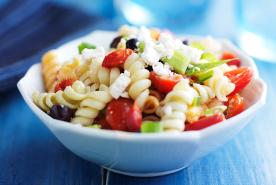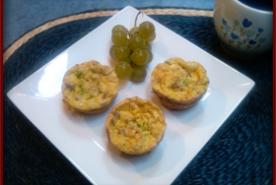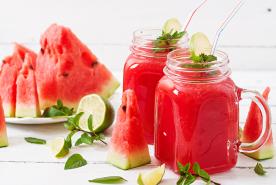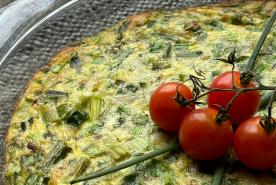Discover tips for following the DASH diet to lower kidney and heart disease risk. Focus on reducing sodium, increasing fruits and veggies, and choosing low-fat dairy.
Following the DASH diet is a great way to lower your risk of developing kidney and heart disease. Follow a diet that has been proven to lower your risk for kidney disease, kidney stones, and heart disease! The DASH diet, which stands for Dietary Approaches to Stop Hypertension (high blood pressure) -- is a good name because it has been shown to improve health by reducing blood pressure and therefore reducing the risk of heart and kidney diseases.
If you already have chronic kidney disease, you should speak with your kidney doctor and kidney dietitian before starting the DASH diet as you may have special restrictions to consider. This diet should not be used by people on dialysis. People on dialysis have special diet needs that should be discussed with a registered dietitian specializing in kidney disease.
The DASH diet is high in potassium, a mineral you can’t live without that affects blood pressure, muscle function, and many vital processes in your body. Potassium is found in many foods including fruits, vegetables, and low-fat dairy products. The DASH diet also has a moderate amount of sodium, is low in fat, and is high in fiber, potassium, calcium, and magnesium. When you take a look at the DASH diet, it might at first seem hard to reduce the amount of sodium you eat, especially because sodium seems to be found in so many of the foods we eat. Here are a few tips to help keep the sodium to a minimum and eat healthfully on a DASH diet.
Top Tips for Starting the DASH Diet
Limit salt when cooking. Instead, add flavor without adding salt. Try:
- Aromatic vegetables (examples: onions, peppers, garlic)
- Flavor with fruit (examples: citrus juice and fruit zest)
- Herbs (examples: rosemary, parsley, cilantro)
- Spices (examples: black pepper, cinnamon, cumin, ginger, nutmeg)
Read food labels.
- The Nutrition Facts label is your guide to what is inside all processed or packaged foods.
- Low sodium foods have ≤ less than 140 mg of sodium per serving, and
- Very low sodium products have ≤ less than 35 milligrams sodium per serving.
Snack smart and make low sodium snack swaps.
- Look for products that are unsalted, have no added salt, or are lower sodium substitutes for your favorite snacks to make healthy, lower sodium choices.
Make your plate colorful.
- Add fruits or vegetables to every meal. Fill half of your plate with fruits and vegetables. And, try to eat 5 servings of fruits and vegetables per day.
- This limits your sodium intake, and fruits and vegetables are naturally low in fat and also have fiber!
- If your healthcare team has told you to limit potassium, then speak to a dietitian about which fruits and vegetables are okay. You may also need to limit portion sizes of certain fruits and vegetables.
Choose low fat dairy products.
- Low fat dairy products include 1% or skim (nonfat) milk, light yogurt, and 2% cheese. If you are currently eating or drinking high fat dairy products, try the next step down. For example, if you drink whole milk, try 2% milk. If you drink 2% milk, try 1% milk.
- Order your favorite coffee beverage with non-fat or skim milk. This one small change can have a positive impact on your diet and health. Choosing low fat dairy products helps to decrease the saturated fat ("bad fat") in your diet and increases important nutrients like calcium, magnesium, and potassium. Dairy products are naturally low in sodium too!
- But if your healthcare team has told you to limit potassium and phosphorus in your diet, then dairy products will need to be limited. Discuss your options with a dietitian.
Reviewed July 31, 2018
Written by Denon Stacy, MS, RD, CSP, LD

















